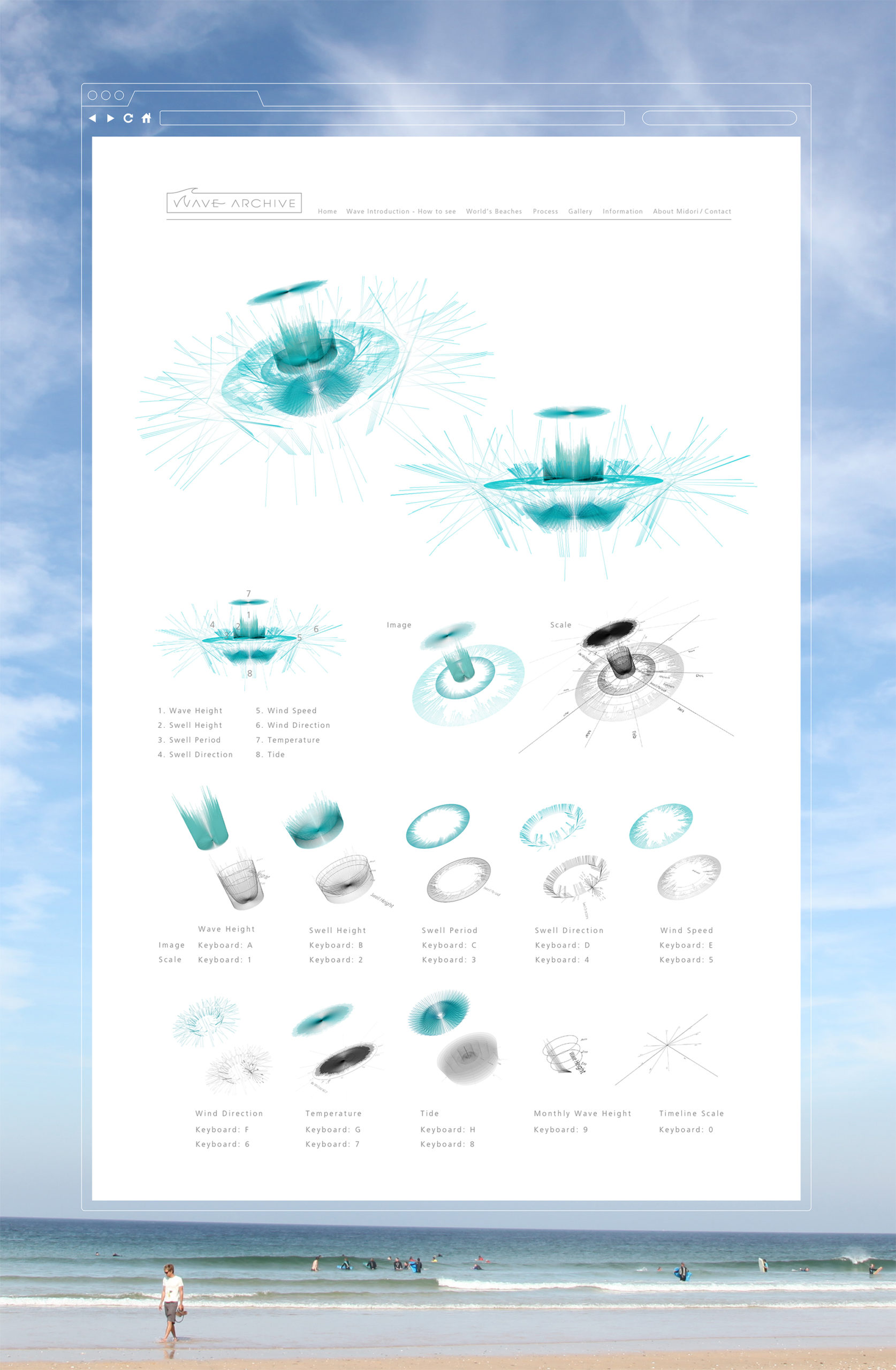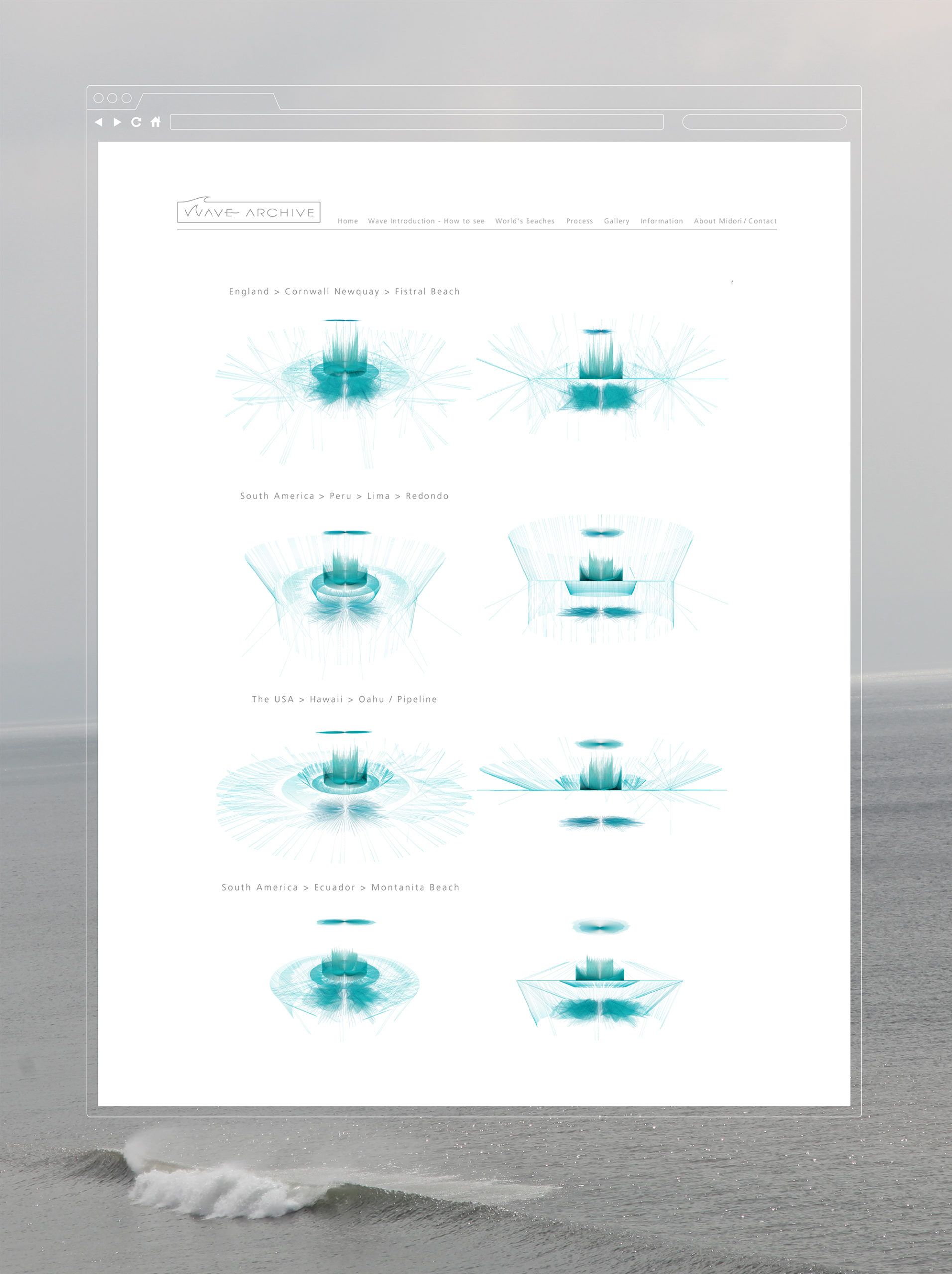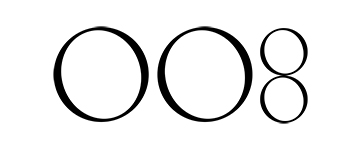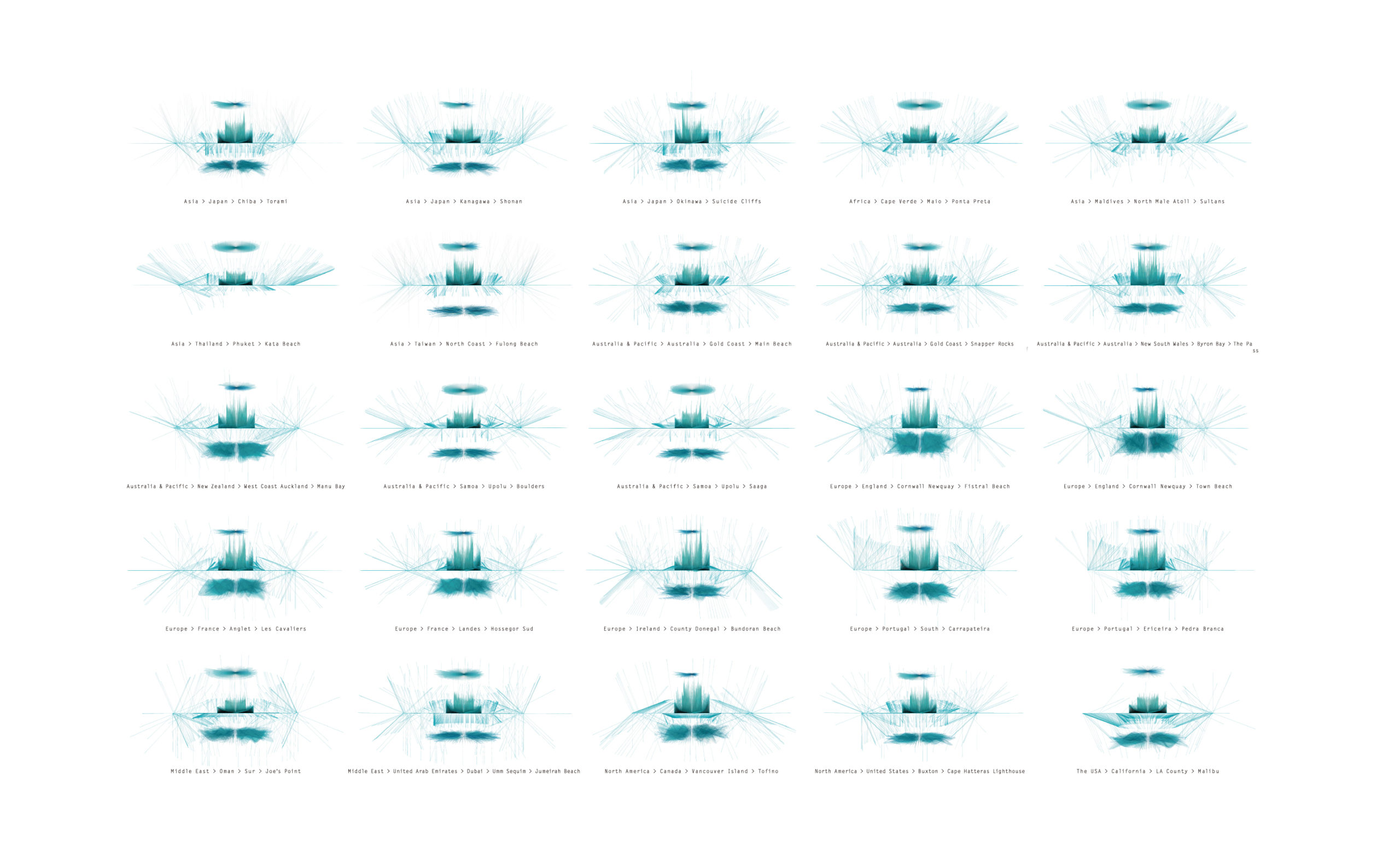「WAVE ARCHIVE」の始まり
London Central Saint Martins College of Art and Design / MA Communication Design
Research, Data visualisation, Digital art
• Featured by WIRED
Creative Director: Midori Yamazaki
OpenSea: WAVE ARCHIVE PROJECT
❄︎ Japanese follows English 日本語訳は英語の後に続きます。
In front of a sparkling, calm beach on the outskirts of London, I regretted my easy trust in my friends. Having passed the examinations required to study abroad and finally being released from a long period of studying without being able to go surfing, I decided to go surfing. A friend who lived on the outskirts of London invited me to come surfing. As a result, I spent a few days just gazing at the water on the beach. I later found out that the friend had never surfed and the beach was not a surfing spot. And this was the beginning of the WAVE ARCHIVE, a research project that I continue to do to this day.
My research at University of the Arts London, Central Saint Martins was on visualisation of oceanographic data, with the research question “How can visual design make complex marine data understandable and aesthetically pleasing?” I developed a way to visualise annual marine data collected from approximately fifty selected beaches all over the world, using computer programming to display a visual forecast, showing the annual tendency of wave conditions. From a scientific point of view, even a single word ‘good wave’ has complex physical laws and requires a comprehensive analysis of various types of information, such as swell height, wind direction and wind speed, as well as wave height.
The process of this research to its final conclusion was completely unexpected: field research on surf spots led to an understanding of the physical laws of waves, which led to new ideas for expressing wave data, which led to …… and the research process led to more and more changes in the image, and finally eight kind of marine data were visualised as an easy-to-understand visual language using computer programming.
The WAVE ARCHIVE was subsequently featured in the science magazine WIRED, which led to connections with researchers with whom I had no previous connection, and has developed into research on wave data for disaster prevention, and in particular on tsunamis in Japan. I find it interesting that when I talk to researchers about surfing waves, even though we have different approaches, we have something in common. I am very much looking forward to seeing how this will work for the WAVE ARCHIVE in the future.
“理想の波”を再現するデザイン

A visual long-term surf forecast showing the annual tendencies in wave conditions. Annual marine data, collected from approximately fifty selected beaches all over the world, are mapped into a common programmed data structure in order to generate graphical information that is understandable and aesthetically pleasing.波浪の年間傾向をビジュアルに表現した長期波浪予測。世界中の約50のビーチから収集された年間波データを、自然のアルゴリズムを使ったコンピュータプログラミングで可視化しており、各ポイントにおける波傾向を表示できます。“理想の波”を再現するデザイン

Comparison of marine condition data. Annual tendencies in wave conditions can be interpreted from a comparison between each surf spot.
海況データの比較。良い波で有名なハワイやバリなどは、イギリスと比較すると海況データの数値が一定しており、安定した形をしています。“理想の波”を再現するデザイン
キラキラ光が反射する穏やかなロンドン郊外のビーチの前で、私は友人を簡単に信じた自分をはげしく後悔していました。留学に必要な試験に合格して、サーフィンにも行けない長い勉強生活からやっと解放された私は、サーフィンに行ってみようと思い立ちました。ロンドン郊外に住んでいる友人が「サーフィンにおいでよ」と誘ってくれたのです。結果、私は数日間ビーチの水面をただ眺めることになりました。後からわかったのですが、その友人はサーフィンをしたことがなく、そのビーチはサーフスポットではありませんでした。そしてこれが今も続けているリサーチ「WAVE ARCHIVE」の始まりでした。
ロンドン芸術大学、セントラル・セント・マーチンズで私が行ったリサーチは海況データの可視化で、「ビジュアルデザインで、どのようにして複雑な海況データを美しくわかりやすくすることができるか?」というリサーチクエスチョンにおいて、世界のサーフスポットの年間波データを自然のアルゴリズムを使ったコンピュータプログラミングで可視化し、各ポイントにおける波傾向の表示方法を開発しました。一言で「よい波」といってもサイエンスの視点からみると複雑な物理法則があり、波高だけでなく、うねりの高さ、風向、風速など、さまざまな種類の情報を総合的に分析する必要があります。
このリサーチの最終結論までのプロセスは全く予想外の展開で、サーフスポットのフィールドリサーチが波の物理法則の理解に繋がり、それが波データの新しい表現アイデアに繋がり……とリサーチプロセスが自分の描くイメージをどんどん変化させ、最終的には、8種類の海況情報を、コンピュータプログラミングを使って、Look & Feelできるビジュアル言語として可視化することができました。
その後「WAVE ARCHIVE」は、WIREDに取り上げてもらったことをきっかけに、今まで縁がなかった研究者の方々と繋がりができ、防災に関する波データ研究、特に日本の津波に関する研究にまで発展しています。研究者の方々とサーフィンの波について話すと、アプローチは違っても共通点があることにおもしろさを感じます。それが今後「WAVE ARCHIVE」にどのように作用するのか、とても楽しみです。

